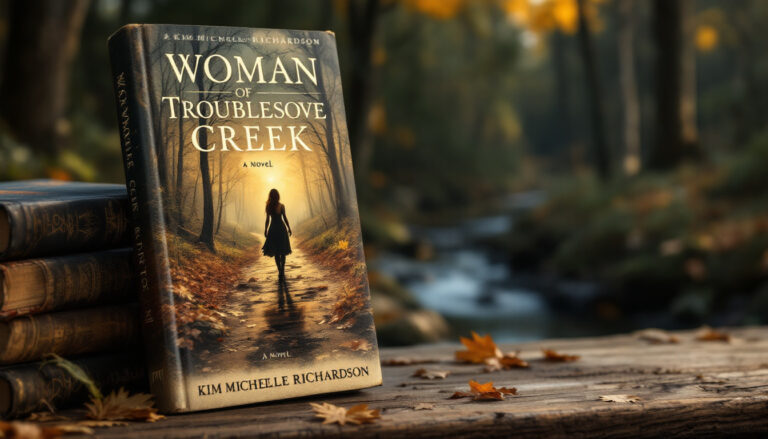Voyager by Diana Gabaldon – A Review of Love, Time, and Adventure
Diana Gabaldon’s Voyager picks up where the intensity of the Outlander series left off, delivering a story that spans centuries and continents. It’s about love tested by time and fate, and the reunion of two characters after decades of separation. This third installment mixes historical drama, romance, and bold adventure, taking readers from the Scottish Highlands to the open seas and beyond. In this review, we’ll explore the gripping plot, memorable characters, and the intricate writing that makes this novel stand out for fans of the series and newcomers alike.
Overview of the Plot
Diana Gabaldon’s Voyager intertwines two lives once bound by love and ripped apart by centuries. Picking up amid the chaos of the 18th century and the modern world, the story bridges time and distance with heartbreak, struggle, and hope. Let’s break down the key moments.
Jamie’s Journey Post-Culloden
For Jamie Fraser, survival often feels like nothing short of a cruel twist of fate. After the catastrophic Battle of Culloden, Jamie is left physically and emotionally shattered. The field is littered with bodies, including that of Jack Randall, lying lifeless atop him. Jamie’s body survives, but his spirit carries deep scars. Learn more about Jamie’s survival post-Culloden.
Returning to Lallybroch, the home he holds dear, presents even more challenges. Jamie must give up his claim to the estate to save his family from English retribution. Facing betrayal and loss, he’s reduced to hiding in a cave, cut off from the world he once knew. Imprisonment becomes his next trial, but through it all, Jamie’s resilience remains a central theme. Adding to his complexities, Jamie reluctantly marries Laoghaire after being pressured, a decision that brings its own turmoil (details on Jamie’s struggles).
Claire’s Life in the 20th Century
While Jamie endures the 18th century’s brutal challenges, Claire builds a life in 20th-century Boston. Now a dedicated surgeon, Claire exemplifies professionalism and strength but wrestles with the void Jamie’s absence leaves in her heart. She raises their daughter, Brianna, with Frank, her first husband, whose bitterness adds strain to their already complex relationship. Despite dedicating herself to her family and career, Claire often feels like she’s living a borrowed life. Explore more about Claire’s modern-day experiences.
Claire’s bond with Brianna remains a guiding light – a reflection of Jamie’s influence, even across centuries. Her narrative weaves resilience and adaptation into a time she wasn’t meant to inhabit.
The Reunion of Jamie and Claire
The emotional cornerstone of Voyager is undeniably the moment Jamie and Claire reunite. After 20 years of separation, their meeting in a print shop in Edinburgh unfolds like a tidal wave of emotions. Having been apart for so long, their reunion is raw, awkward, and heart-achingly sweet. There are memories to untangle, wounds to heal, and questions to answer. For Jamie, it’s as if he’s seeing a ghost; for Claire, it’s stepping back into a world she thought impossible to reclaim.
This scene transcends simple storytelling. Readers feel the weight of their years apart, the hope they’ve clung to, and the love that binds them across time. Read an in-depth analysis of their reunion.
The beauty of their relationship lies not just in their love but in their willingness to confront the pain time has inflicted. They share laughter, heartbreak, and cautious hope. Together, they take the first steps toward rebuilding their lives in a world both familiar and foreign. This reunion serves as a testament to enduring love, setting the stage for the adventures to come.
Character Analysis
The heart of Voyager lies not just in its sweeping plot but in the deeply human and multi-dimensional characters. Diana Gabaldon has crafted layered personalities that evolve with their circumstances, making us cheer for their victories, grieve their losses, and feel their struggles. Let’s dig into the standout characters and what makes them unforgettable.
Jamie Fraser: Growth and Struggles
Jamie Fraser, the cornerstone of Voyager, is far from a stereotypical hero. His journey of rebuilding after the tragedy of Culloden is marked by resilience, loyalty, and inner turmoil. Over the years, Jamie adopts multiple roles — a fugitive, laird, husband, and even a reluctant stepfather. Each role chips away at him but also makes him stronger in unexpected ways.
After surviving Culloden, Jamie doesn’t just fight external battles; he confronts himself too. The guilt of loss hangs heavy on him, whether it’s the men he couldn’t save at Culloden or his estrangement from Claire and their child, Brianna, whom he has never met. His decision to marry Laoghaire, though intended as a gesture of stability, highlights the flaws in his character and adds tension to his eventual reunion with Claire. Jamie’s ability to learn from his actions, whether noble or misguided, makes him relatable and human. Explore a deeper insight into Jamie’s character arc here.
Ultimately, Jamie’s steadfast loyalty—to his family, his land, and Claire—remains his defining trait. Even when the world turns its back on him, he finds ways to rise, making his journey one of raw survival mixed with hope.
Claire Fraser: Strength and Sacrifices
Claire Fraser’s life is a balancing act. She embodies strength while grappling with sacrifice. A mother, a skilled doctor, and a time-traveler, Claire’s ability to thrive in both the 18th and 20th centuries is nothing short of remarkable. However, her life post-reunion with Jamie is not without its cracks.
Raising Brianna in a world that isn’t fully hers while working as a surgeon demonstrates Claire’s fortitude. She redirects her heartbreak into raising Brianna with unwavering dedication, even when enduring an unfulfilling marriage with Frank. But when the opportunity to reunite with Jamie surfaces, Claire’s internal conflict is palpable. How does one walk away from a life they’ve painstakingly maintained to reclaim another? Learn more about the layers of Claire’s character here.
Her dual-life existence also reflects a timeless question: Can we truly have it all? Claire forces us to confront this through her struggles, often choosing love at the expense of other comforts, proving that her resilience lies in facing the consequences head-on.
Notable Supporting Characters
While Jamie and Claire anchor the story, Voyager shines because of its supporting cast. These characters add depth and complexity, enriching the narrative and making the world feel lived-in.
- Young Ian Murray: Jamie’s nephew, Young Ian, is a perfect blend of innocence and adventure. Bursting with curiosity and loyalty, he brings youthful energy to the story. His tendency to leap before he looks often lands him in precarious situations, yet it’s his good heart and endless bravery that make him a fan-favorite. Dive into more about Young Ian’s role in Voyager.
- Lord John Grey: As a British soldier with an unshakable sense of duty and a deep, albeit unreciprocated, affection for Jamie, Lord John Grey stands out as one of the series’ most compelling characters. His kindness and moral compass add a unique dimension, especially in a world often hardened by war and pain. His friendship with Jamie is imbued with respect and subtle emotional tension, underscoring his complexity. Discover more about Lord John’s impact on Voyager.
Whether it’s Young Ian’s boundless zest for life or Lord John’s dignified restraint, these supporting characters expand the emotional spectrum of Voyager. They are more than side players; they help us see Jamie and Claire through fresh perspectives and add layers to their evolving story.
Themes and Tone
In Voyager, Diana Gabaldon masterfully examines themes that revolve around love enduring over time and the exploration of identity. Her protagonists, Jamie and Claire, traverse a journey of reconnection after two decades of separation, which brings both joy and emotional challenges. Similarly, their struggle with rediscovery—both individually and as a reunited couple—forms a central pillar of the narrative. Each theme is woven into the story with careful precision, creating moments that resonate deeply with readers.
Love and Reconnection
Jamie and Claire’s enduring love is the emotional core of Voyager. Their separation spans twenty years, filled with sorrow, personal growth, and an unshakable belief in their bond. This theme is highlighted in their reunion at the print shop, a moment that brims with raw, bittersweet emotions. Imagine a dam breaking—a rush of love, relief, and awkwardness as they navigate two decades’ worth of changes. It’s not just a romantic reunion; it’s a testament to a love that has withstood time and circumstances.
Throughout the book, Gabaldon portrays their love as both imperfect and invincible. They confront challenges like Jamie’s previous marriage to Laoghaire and Claire’s life with Frank. Unlike a fairy tale, their love comes with baggage, but that’s what makes it relatable. Readers see a love that accepts flaws and adjusts to reality.
This enduring connection also resonates through their interactions with their daughter, Brianna. Even though Jamie and Brianna haven’t met, their bond exists through stories and memories that Claire shares. Such moments exemplify how love not only survives but also finds new dimensions across time. Learn more about love and challenges in Voyager.
Identity and Rediscovery
Nearly as significant as the love they share is the theme of identity, which intricately binds both Jamie’s and Claire’s arcs. Twenty years apart leaves scars: Jamie in the 18th century grappling with loss and Claire in the 20th century building a life as a mother and surgeon. When they finally reunite, the challenge is rediscovering not only the person standing before them but also who they are as individuals.
Gabaldon paints Jamie as a man transformed by hardship. The confident, youthful laird of previous books now carries the weight of countless losses, from his men at Culloden to his identity as a free Highlander. His acceptance of new roles—like hiding in caves, enduring imprisonment, or begrudgingly remarrying—shapes a man who is both familiar and foreign. Similarly, Claire struggles to reconcile her life as a 20th-century professional woman with her past as Jamie’s wife. For both, their reunion is as much about reigniting their relationship as it is confronting who they’ve become. Discover how identity shapes the storyline in Voyager.
Together, they must redefine their partnership, facing the reality that love alone cannot erase two decades of change. This exploration adds emotional complexity and engages readers who might wonder: How do we reconcile the past and present when life has drastically changed us?
Through themes of love and identity, Voyager demonstrates Gabaldon’s ability to capture the highs and lows of human connection in ways both aching and authentic. These layers make the novel unforgettable, offering readers not just a story but a rich emotional journey.
Strengths and Weaknesses of the Book
Diana Gabaldon’s Voyager is a tapestry of intricate storytelling, brimming with historical detail, emotional connections, and moments of both triumph and missteps. Let’s take a closer look at what makes this novel shine, as well as areas where readers might feel its seams stretch too thin.
Strengths: Historical and Emotional Depth
One of the standout qualities of Voyager is its meticulous historical accuracy paired with a depth of emotional resonance. Unlike some historical fiction that merely skirts the surface, Gabaldon dives fully into the details of 18th-century Scotland and beyond. From Jacobite rebellions to prison life at Ardsmuir, Gabaldon’s commitment to historical integrity is remarkable. Her descriptions transport readers into the gritty textures of the past, making the narrative feel authentic and immersive. Mark up a review highlighting historical accuracy here.
But it’s not just the history that stands out — it’s how Gabaldon layers her characters’ emotions within these periods. As Jamie faces imprisonment and exile, you can almost feel the weight on his shoulders. Claire’s struggles with time travel and motherhood resonate deeply, showcasing Gabaldon’s capacity to weave raw, human elements into her story. Readers aren’t just observing characters; they’re experiencing their highs and lows. Explore how emotional resonance is a cornerstone of Gabaldon’s story.
Highlights of the historical and emotional depth include:
- Vivid descriptions of 18th-century Caribbean life, from bustling ports to uncharted jungles.
- The haunting portrayal of Culloden’s aftermath, steeped in loss yet tinged with resilience.
- Claire and Jamie’s reunion, with all its imperfections, encapsulates years of longing in one heartfelt scene.
Thanks to Gabaldon’s thorough research and narrative skill, you’re not just reading the book. You’re living it.
Weaknesses: Pacing and New Elements
While Voyager excels in many areas, it’s not without flaws. The pacing of the novel has faced criticism from fans and casual readers alike, particularly as it introduces shifts in tone and setting. The story begins grounded in the emotional weight of Jamie and Claire’s reunion. But as the plot propels toward the Caribbean — filled with intrigue, smuggling, and shipboard drama — some feel the transition disrupts the book’s prior tone and cohesion. One review highlights these pacing challenges.
The West Indies segment, for example, adds a swashbuckling flair to an already complex narrative. While adventurous moments can be thrilling, they often come at the expense of the emotional core forged earlier in the book. The sudden introduction of these plotlines — such as superstitions, pirates, and mystical undertones — might feel like overloading the reader. For those enjoying the quiet historical build-up, these shifts may feel less grounded, almost like a different story wedged into the same novel.
Main critiques of pacing and new elements include:
- A slow start that feels bogged down in expository details.
- A jarring tonal pivot toward maritime adventures that could alienate some fans.
- Attempts to resolve numerous subplots within a limited space, which can feel rushed or incomplete.
This uneven pacing doesn’t derail the novel’s success but does create a sense of disjointedness. Some readers may appreciate the genre-blending, while others long for the emotional depth to take center stage without interruption. Dive deeper into varied reviews of Voyager.
In the end, Voyager’s strengths far outweigh its weaknesses, but acknowledgment of these pacing and tone challenges helps appreciate this ambitious work more thoroughly. Gabaldon undoubtedly swings for the fences with each installment, making the novel’s occasional missteps feel more like growing pains than outright flaws.
Conclusion
Voyager by Diana Gabaldon is a memorable installment in the Outlander series, capturing the complexity of love, time, and rediscovery. The novel’s emotional depth, vivid historical elements, and compelling characters make it an unforgettable experience for readers who enjoy epic storytelling.
While some parts of the plot feel meandering, particularly during its maritime shift, the emotional connection between Jamie and Claire remains its anchor. For fans of historical fiction and intricate love stories, Voyager offers a rich, layered narrative that’s worth the journey.
If you’ve read it, what struck you most about the reunion or their struggles? Share your thoughts below—let’s keep the discussion going!







